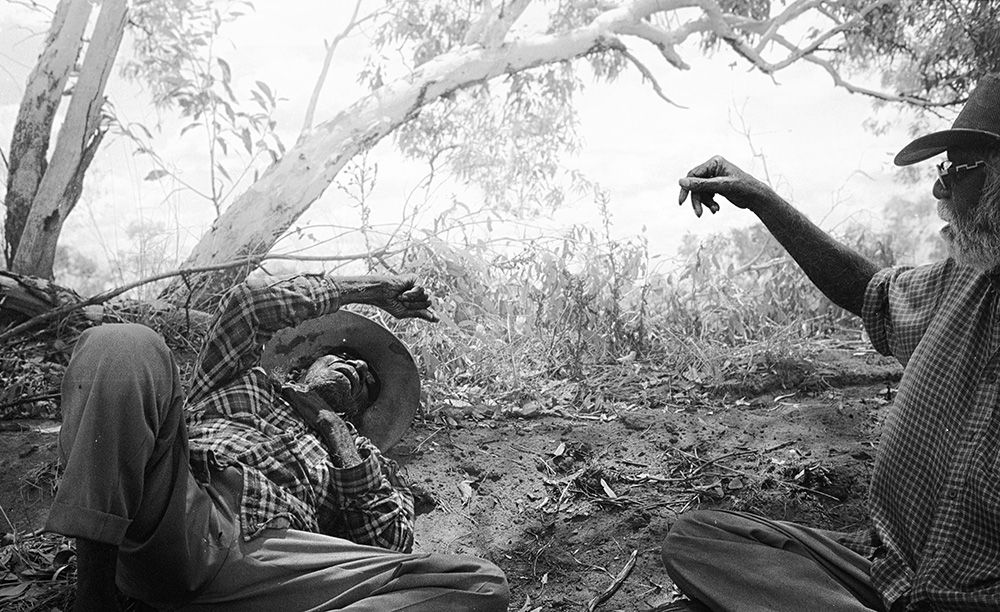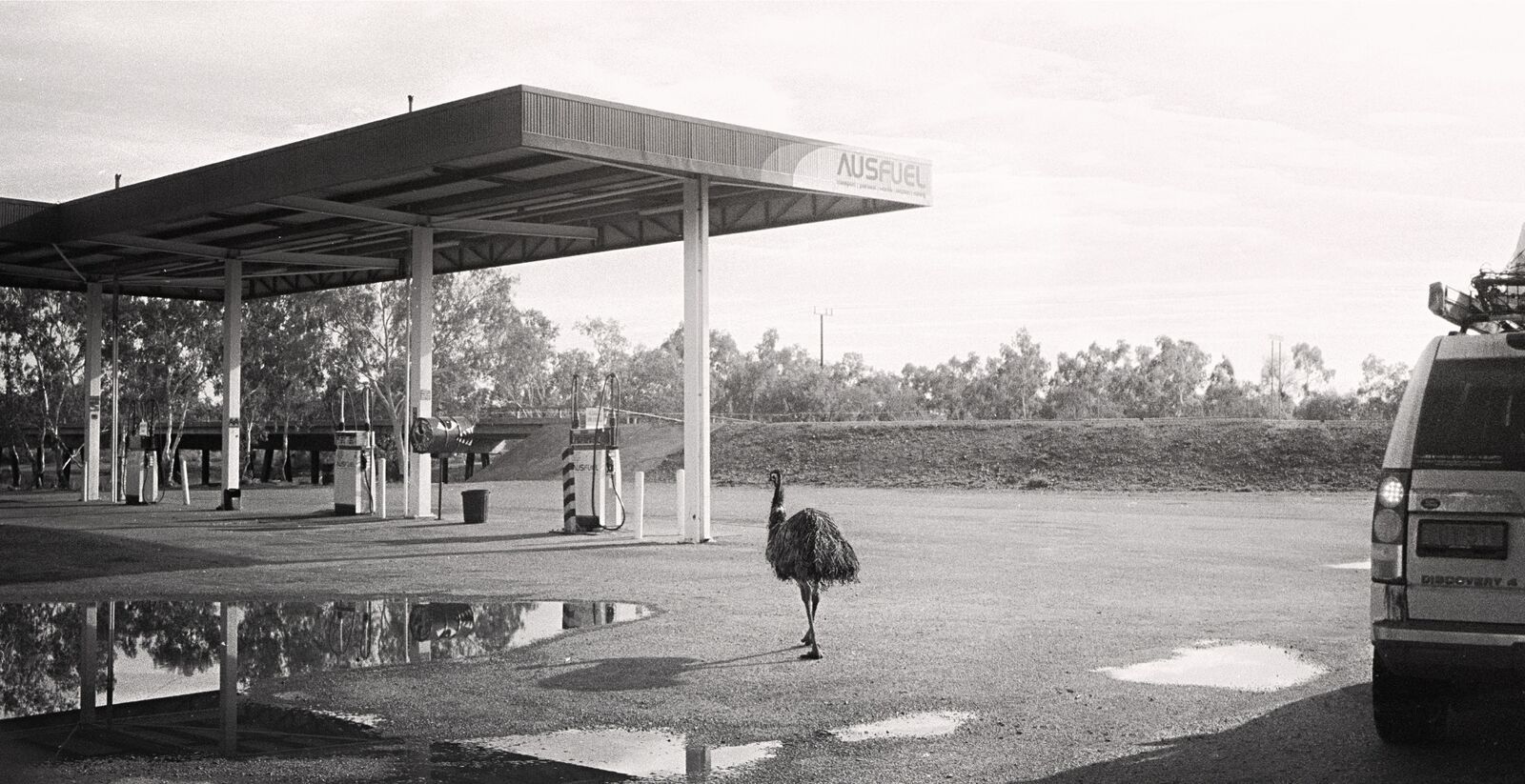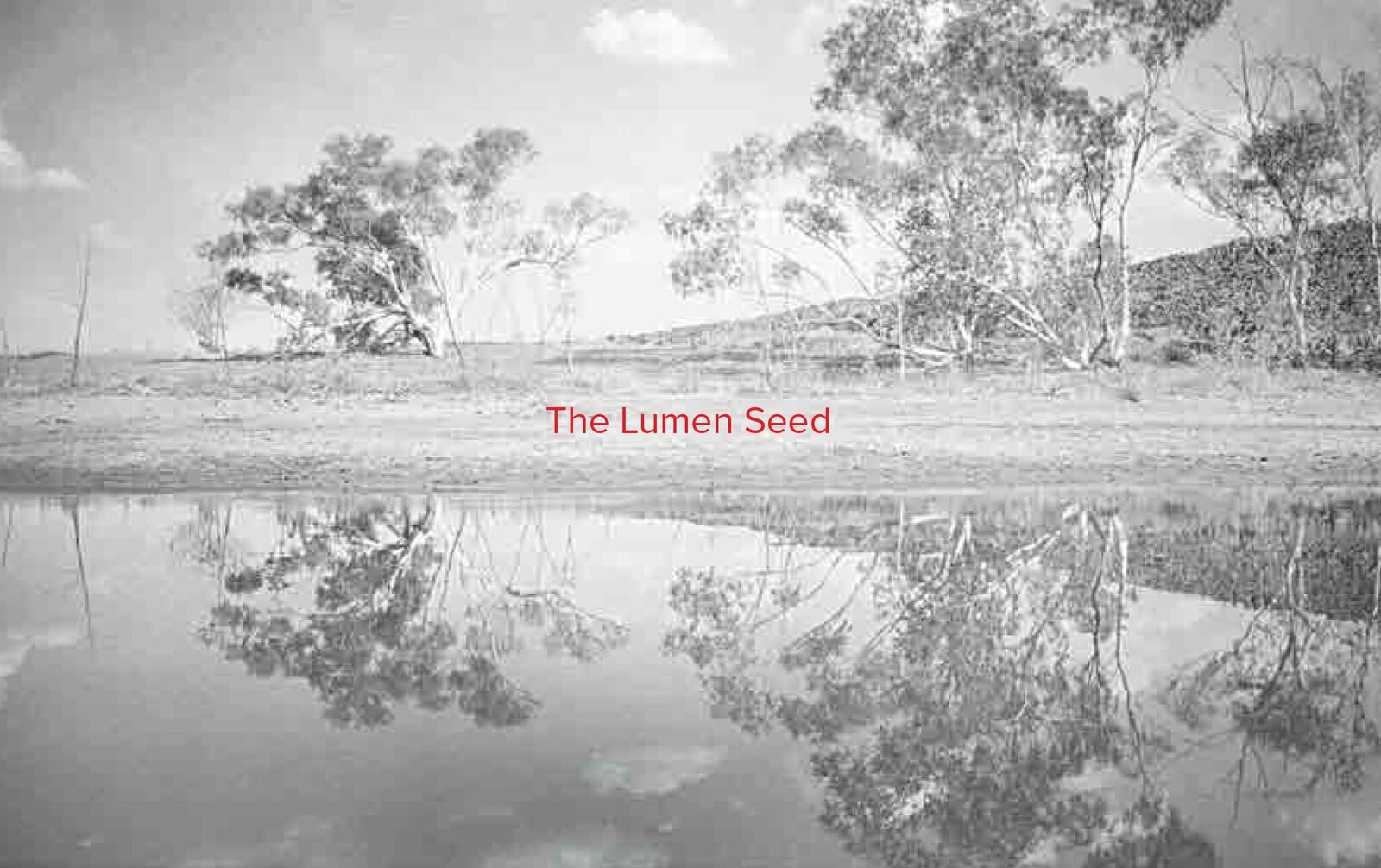blog
Book Review: The Lumen Seed by Judith Crispin

Four Kurdu-kurdu[kids] with Trampoline (Lajamanu Community NT, December 2015)
I’ve very much warmed to the photographer’s quote that precedes the press release:
“… Warlpiri people move through the landscape, they introduce themselves. They apologize to that country for breaking twigs. They ask permission to take water from the creeks. If humanity ever transcends its selfish and murderous nature, it will be because of people like the Warlpiri. ”
I can easily identify with the Warlpiri take on things for as a young boy I was convinced, like the native Indians in North America, that to tear a branch from a tree meant to hurt the tree. This feeling of being connected (to be more precise: that all things – including human beings – are connected) , I’ve never really lost. When, a few years ago, the only reason I did not give in to the urge to embrace the two tall trees I was passing by when going to the beach (near Havana, Cuba) was my fear people would think I’m nuts or from California.
“The Lumen Seed” was “created in close consultation with the Warlpiri community elders”, I learn. And so I imagined Judith Crispin sitting devoutly on the floor listening to an old wrinkled man in an armchair smoking a pipe … well, I was wrong. Just look at the Wirntali-Jarra pic and read the caption and you will get a sense of the thoroughly relaxed and easy-going atmosphere that this tome conveys. Is there anything more desirable than to go through life feeling at ease?

Wirntali-Jarra [Friends] (near Emu waterhole, Tanami Desert NT, December 2015)
Henry Jackamarra and Jerry Jangala have known each other since they were small children. More than a decade his senior, Henry treats Jerry like a little brother – still lecturing him on what he eats and wears, although both men are now respected elders.
For Judith Crispin, the discovery of Aboriginal Australia is a revelation, and a love story. And, as much as I feel intrigued by her transformation from the one who thought the Warlpiri needed her help to the one who was helped, and adopted, by them, I remain somewhat sceptical. How come? I’m wary of “solutions”, I’m wary of authority figures (i.e. Senior Law man), I’m wary of people who claim “to understand.” At the same time, I do not want, and cannot, argue with a woman who writes: “I know there is a secret world nested inside this one. I’ve seen it.” I believe her. Moreover, I appreciate her sharing “a particularly miraculous vision of the world that comes only with the diagnosis of serious illness.”
What I’ve also appreciated was the mix of factual reporting on British nuclear tests between 1952 and 1963 and Judith’s easy-going, humorous approach. “Before leaving Canberra, I phoned Wanta in Lajamanu for reassurance – ‘What if I get lost?’ I asked him ‘There’s no reception out there.’ ‘Follow the emus’, he answered, doing his best impersonation of a Buddhist sage, We laughed, but every single morning of that first trip, at Mildura, Woomera, Coober Pedy, and Alice, emus walked toward me out of the desert.”

Eemie at the UFO Roadhouse (Wycliffe Well Roadhouse and Van-park NT, December 2015
UFO enthusiast Arc Vanderzalm moved to the desert in 2004 to establish a UFO-themed van park. In the can park’s early years, Arc rescued an abandoned emu chick and raised him by hand. He neamed him Eemie. Travelers stopping for fuel at Wycliffe Well roadhouse are sometimes surprised by an adult emu staring in at them through the window. While a guest of the van park, I once startled Eemie by walking into the ladies’ shower block. He peered out at me through the shower curtain with an air of embarrassment, a though I’d intruded at a delicate moment. Later, as I drove toward Tennent Creek, I spotted Eemie chasing a farm dog down the highway, legs akimbo.
The reason I’m quoting Judith here at length is because I wished more photographers were informing me about how their pictures came about respectively what preceeded the picture taking and what then followed. For the picture taking I warm to most is documenting a process.
It is a small-format tome, most pics are in black and white. It is a work that – as Juno Gemes points out in her introduction – stands “in the tradition of Tina Modotti and Josef Koudelka – a generation of documentary photographers who believe fervently that if you show people what is actually happening in the world, they will understand and be moved to demand change.”
What makes this work dear to me is how photographs and captions/texts complement each other. In my experience, this is rare. Moreover, that Judith Crispin made me see anew how all is connected. As Alan Watts (in: The Book on the Taboo Against Knowing Who You are) once penned: “We often say that you can only think of one thing at a time. The truth is that in looking at the world bit by bit we convince ourselves that it consists of separate things, and so give ourselves the problem of how these things are connected and how they cause and effect each other. The problem would never have arisen if we had been aware that it was just our way of looking at the world which had chopped it up into separate bits, things, events, causes, and effects. We do not see that the world is all of a piece …”

The Lumen Seed
Photographs and Poems by Judith Crispin
The Story of the Indigenous Warlpiri People of Australia’s Northern Tanami Desert
Foreword by Juno Gemes
Daylight Books, February 2017
www.daylightbooks.org, info@daylightbooks.org
Location: Online Type: Book Review
Events by Location
Post Categories
Tags
- Abstract
- Alternative process
- Architecture
- Artist Talk
- artistic residency
- Biennial
- Black and White
- Book Fair
- Car culture
- Charity
- Childhood
- Children
- Cities
- Collaboration
- Community
- Cyanotype
- Documentary
- Environment
- Event
- Exhibition
- Faith
- Family
- Fashion
- Festival
- Film Review
- Food
- Friendship
- FStop20th
- Gender
- Gun Culture
- Habitat
- Hom
- home
- journal
- Landscapes
- Lecture
- Love
- Masculinity
- Mental Health
- Migration
- Museums
- Music
- Nature
- Night
- nuclear
- p
- photographic residency
- Photomontage
- Plants
- Podcast
- Portraits
- Prairies
- Religion
- River
- Still Life
- Street Photography
- Tourism
- UFO
- Water
- Zine

Leave a Reply